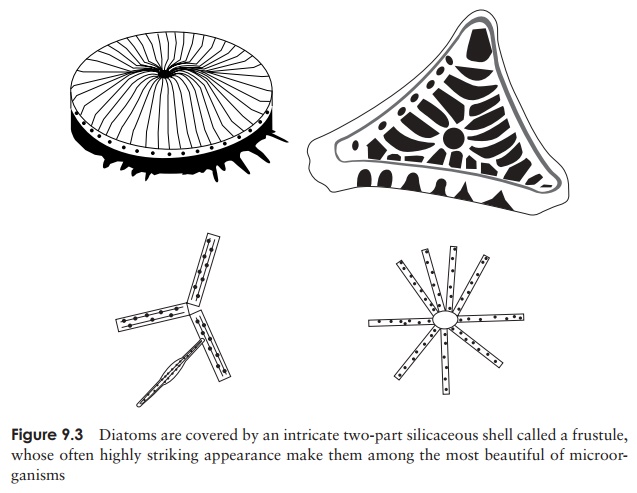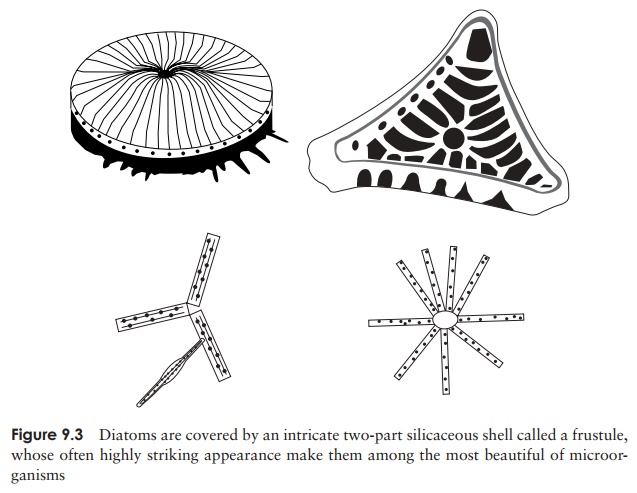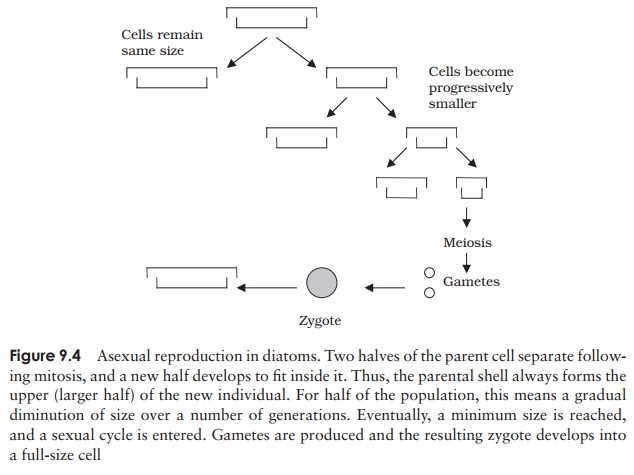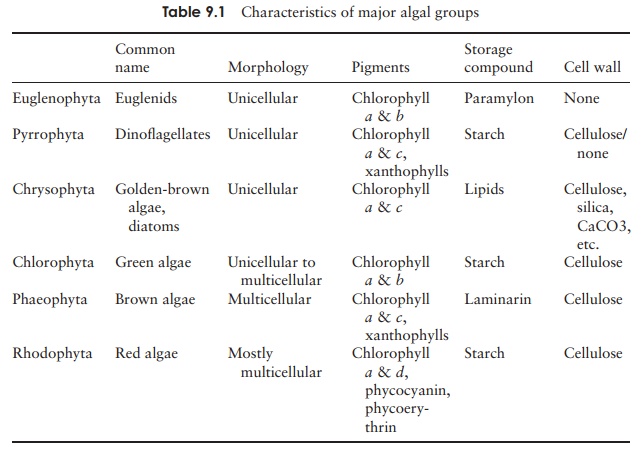Chapter: Essential Microbiology: Protista
Diatoms - Structural characteristics of algal protists

Diatoms
The diatoms, which belong to the division Chrysophyta
(the golden-brown algae), make up the majority of phytoplankton in marine food
chains, and as such are the most important group of algal protists in terms of
photosynthetic production. Over 10 000 species of diatom are recognised, but
some experts feel that the real number is many times greater than this.
As with the dinoflagellates, chlorophylls a and c are present, but not chlorophyll b. Their colour is due to carotenoids and xanthophylls
(particularly fucoxanthin) masking the chlorophyll.
Diatoms have their cells surrounded by a silica-based
shell known as a frustule, composed
of two overlapping halves (the epitheca and the hypotheca). Microbiologists are
rarely able to resist the temptation to liken this structure to that of a petri
dish, and with good reason. With the electron microscope it can be seen that
the frustule is perforated with numerous tiny pores that connect the protoplast
of the cell with the outside environment. Diatom classification is based almost
entirely on the shape and pattern of these shells, which are uniform for a particular
species, and often have a very striking appearance (Figure 9.3). When diatoms
die, their shells fall to the bottom of the sea, and can accumulate in thick
layers where they represent a valuable mineral resource. This fine, light
material (diatomaceous earth) has a number of applications, for example in
filtration systems, and also as a light abrasive in products such as silver
polish or toothpaste.

Reproduction is usually asexual by binary fission,
but a sexual phase with the produc-tion of haploid gametes can occur.
Chrysophytes are unusual among the three primitive groups of algae in that they
are diploid. In diatoms, asexual reproduction involves mi-totic cell division,
with each daughter cell receiving one half of the parental frustule, and synthesizing
a new one to complement it. The newly formed half, however, always acts as the
hypotheca (lower half) of the new cell; consequently, one in two daughter cells
will be slightly smaller than the parent, an effect which is heightened over a
number

of generations (Figure 9.4). This process continues
until a critical size is reached, and the diatoms undergo a phase of sexual
reproduction, which re-establishes the normal frustule size. In species whose
frustules have a degree of elasticity, the daughter cells are able to expand,
and the problem of cell diminution does not arise. In bilaterally sym-metrical
(long, thin) diatoms, meiosis in parental cells produces identical, non-motile
gametes, which fuse to form a zygote. The radially symmetrical (round) forms
provide an example of the third pattern of gamete fusion found in the algae: oogamy. Here, there is a clear
distinction between the small, motile sperm cell and the larger, immobile egg
cell. Both are produced by meiosis in the parental cell, followed, in the case
of the male, by several rounds of mitosis, to give a large number of sperm
cells.

Related Topics